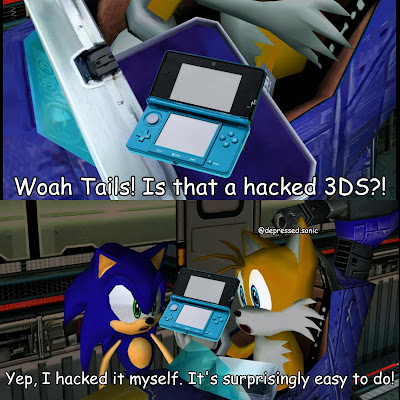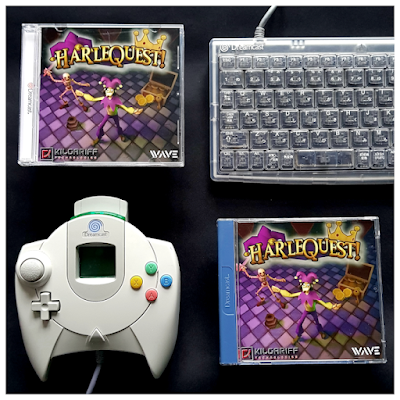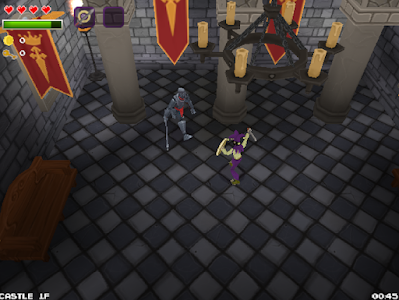 |
| Photo courtesy of SHIRO! |
Let's face it, the Dreamcast controller isn't exactly beloved. Sure, it was the tool that granted us the ability to experience some of the best games to ever exist, but unfortunately suffers from a not very ergonomic shape, a single uncomfortable analog stick, a funky D-pad (no, not the Jet Set Radio kind of funky), and a wire that comes out of its butt. Probably it's best attribute is the fact that it is compatible with a variety of accessories like the VMU memory unit, the rumble pack and the microphone, but those don't make up for how sore your hands feel after an intense sesh of Maken X.
Anyway, those who frequent the Dreamcast community may recall that Retro-Bit, a manufacturer of all kinds of aftermarket retro gaming accessories, including officially licensed recreations of Sega controllers, announced a redesigned Dreamcast controller in 2020 with an ETA for later that year. In 2021, they provided an update to say that due to manufacturing shortages, the controller had been delayed. Finally, at this year's Portland Retro Gaming Expo, Retro-Bit finally offered us a glimpse of these much anticipated pads.
 |
| Photo courtesy of SHIRO! |
Thanks to our friends at Sega Saturn, SHIRO!, those who didn't attend the convention were able to get a look at these in progress prototypes of both a wired and wireless variant of Retro-Bit's controllers via some photos they uploaded to Twitter. Matching the original designs presented to us in 2020, these upcoming controllers feature a more comfortable-looking recessed analog stick (compared to the dome design of the original), a Sega Saturn style D-pad, redesigned trigger buttons, and six face buttons that are laid out in a slanted orientation more suited for fighting games, with the C and Z buttons doubling to mirror the L and R triggers. On the wired version, the wire comes out of the top. This means there is now only one VMU slot available, however the controller does include built-in rumble, and if you're anything like me, the rumble pack is all that second slot gets used for anyway.
The wireless Bluetooth version shown off does not have a built-in VMU slot, and instead opts for the use of a VMU receiver dongle, which is similar to what we've seen from the upcoming Retro Fighters StrikerDC wireless controller. A possible reason we're seeing this workaround from companies like Retro Fighters and Retro-Bit was explained to us in our Discord by our pal Derek Pascarella (not affiliated with either company, just a bit of a tech whizz), who explained that not only can Bluetooth connections be interrupted which can lead to save data being corrupted, but also the "madness of trying to synchronise timings of a Bluetooth signal with strict MAPLE bus timings for Dreamcast input peripherals". Very good, what he said. So far, the only person to pull off this technical feat of allowing VMU support in a wireless controller is Chris Diaoglou with his DreamConn, and we can only imagine how much time and effort that took him to pull off.
Retro-Bit's dongle connects from USB-C to the Dreamcast controller port, stands vertically, and even has a little kickstand for extra support. Retro-Bit's wireless controller will also ship with a compatible USB dongle for compatibility with PC, Mac and an array of modern consoles.
 |
| Photo courtesy of SHIRO! |
At the expo, SHIRO! also filmed an interview with Retro-Bit's Marketing and Product Specialist Andreas Ordonez, where he showed the controllers off a bit more, and also answered some very important questions. Andreas confirmed that various aspects of the controller are still being improved and ironed out, such as the form-factor, and how the VMU receiver will operate. With this in mind, he said we may hear more in 2024 depending on how everything progresses. As for pricing, he speculated that it would possibly by in the $49.99 range and not much more than that, with the wired version obviously being cheaper, although an idea of price wasn't given for that one.
I do like the idea of having a Saturn-style D-pad and an improved analog stick, but I'm personally not as keen on the drastic change to the layout of the standard A, B, Y, Z button layout, and perhaps wished they'd opted more for something like that of the Mad Catz Dream Pad, that preserves their original position (I never thought I'd praise something Mad Catz made). Also, while it's not so much an issue for me, the form factor still looks very similar to that of the original controller, which many have criticised for being unergonomic, so to have all these potential improvements but keep that original shape seems a bit of a misstep. But of course, these are just prototypes, so are subject to change from what we should expect from the final product.
Anyway, let us know what you think of these prototypes in the comments section below, or via one of our many social media channels. A big thanks goes out to Sega Saturn, SHIRO! for their coverage of these controllers. Be sure to go check out their website.





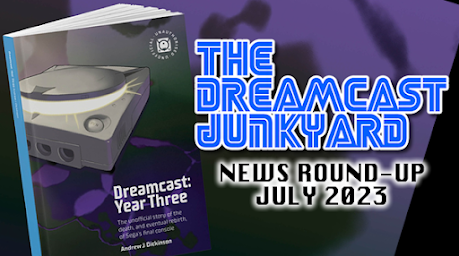

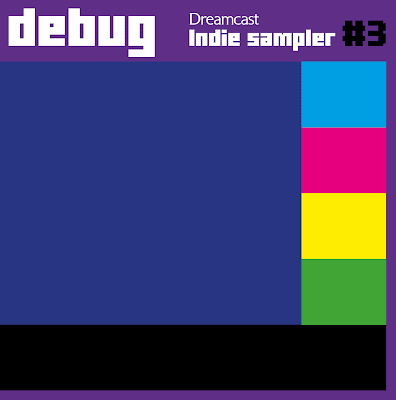


















.png)
.jpg)






.jpg)
